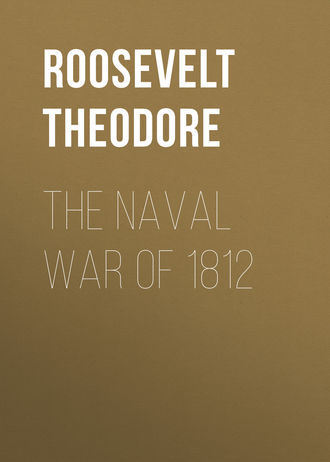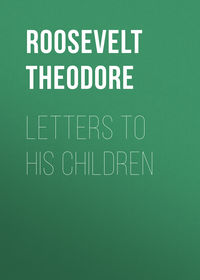 полная версия
полная версияThe Naval War of 1812
His ideas of the purpose for which his command had been created were erroneous and very hurtful to the American cause. That purpose was not, except incidentally, "the destruction of the enemy's fleet"; and, if it was, he entirely failed to accomplish it. The real purpose was to enable Canada to be successfully invaded, or to assist in repelling an invasion of the United States. These services could only be efficiently performed by acting in union with the land-forces, for his independent action could evidently have little effect. The only important services he had performed had been in attacking Forts George and York, where he had been rendered "subordinate to, and an appendage of, the army." His only chance of accomplishing any thing lay in similar acts of cooperation, and he refused to do these. Had he acted as he ought to have done, and assisted Brown to the utmost, he would certainly have accomplished much more than he did, and might have enabled Brown to assault Kingston, when Yeo's fleet would of course have been captured. The insubordination, petty stickling for his own dignity, and lack of appreciation of the necessity of acting in concert that he showed, were the very faults which proved most fatal to the success of our various land commanders in the early part of the war. Even had Chauncy's assistance availed nothing, he could not have accomplished less than he did. He remained off Kingston blockading Yeo, being once or twice blown off by gales. He sent Lieutenant Gregory, accompanied by Midshipman Hart and six men, in to reconnoitre on August 25th; the lieutenant ran across two barges containing 30 men, and was captured after the midshipman had been killed and the lieutenant and four men wounded. On September 21st he transported General Izard and 3,000 men from Sackett's Harbor to the Genesee; and then again blockaded Kingston until the two-decker was nearly completed, when he promptly retired to the Harbor.
The equally cautious Yeo did not come out on the lake till Oct. 15th; he did not indulge in the empty and useless formality of blockading his antagonist, but assisted the British army on the Niagara frontier till navigation closed, about Nov. 21st. A couple of days before, Midshipman McGowan headed an expedition to blow up the two-decker (named the St. Lawrence) with a torpedo, but was discovered by two of the enemy's boats, which he captured and brought in; the attempt was abandoned, because the St. Lawrence was found not to be lying in Kingston.
For this year the material loss again fell heaviest on the British, amounting to one 14-gun brig burned by her crew, one 10-gun schooner burned on the stocks, three gun-boats, three cutters, and one gig captured; while in return the Americans lost one schooner loaded with seven guns, one boat loaded with two, and a gig captured and four guns destroyed at Oswego. In men the British loss was heavier still relatively to that of the Americans, being in killed, wounded, and prisoners about 300 to 80. But in spite of this loss and damage, which was too trivial to be of any account to either side, the success of the season was with the British, inasmuch as they held command over the lake for more than four months, during which time they could coöperate with their army; while the Americans held it for barely two months and a half. In fact the conduct of the two fleets on Lake Ontario during the latter part of the war was almost farcical. As soon as one, by building, acquired the superiority, the foe at once retired to port, where he waited until he had built another vessel or two, when he came out, and the other went into port in turn. Under such circumstances it was hopeless ever to finish the contest by a stand-up sea-fight, each commander calculating the chances with mathematical exactness. The only hope of destroying the enemy's fleet was by cooperating with the land-forces in a successful attack on his main post, when he would be forced to be either destroyed or to fight—and this cooperation Chauncy refused to give. He seems to have been an excellent organizer, but he did not use (certainly not in the summer of 1813) his materials by any means to the best advantage. He was hardly equal to his opponent, and the latter seems to have been little more than an average officer. Yeo blundered several times, as in the attack on Sackett's Harbor, in not following up his advantage at Oswego, in showing so little resource in the action off the Genesee, etc., and he was not troubled by any excess of daring; but during the period when he was actually cruising against Chauncy on the lake he certainly showed to better advantage than the American did. With an inferior force he won a partial victory over his opponent off Niagara, and then kept him in check for six weeks; while Chauncy, with his superior force, was not only partially defeated once, but, when he did gain a partial victory, failed to take advantage of it.
In commenting upon the timid and dilatory tactics of the two commanders on Ontario, however, it must be remembered that the indecisive nature of the results attained had been often paralleled by the numerous similar encounters that took place on the ocean during the wars of the preceding century. In the War of the American Revolution, the English fought some 19 fleet actions with the French, Dutch, and Spaniards; one victory was gained over the French, and one over the Spaniards, while the 17 others were all indecisive, both sides claiming the victory, and neither winning it. Of course, some of them, though indecisive as regards loss and damage, were strategetical victories: thus, Admiral Arbuthnot beat back Admiral Barras off the Chesapeake, in March of 1781; and near the same place in September of the same year the French had their revenge in the victory (one at least in its results) of the Comte de Grasse over Sir Thomas Graves. In the five desperate and bloody combats which De Suffrein waged with Sir Edward Hughes in the East Indies, the laurels were very evenly divided. These five conflicts were not rendered indecisive by any overwariness in manoeuvring, for De Suffrein's attacks were carried out with as much boldness as skill, and his stubborn antagonist was never inclined to baulk him of a fair battle; but the two hardy fighters were so evenly matched that they would pound one another till each was helpless to inflict injury. Very different were the three consecutive battles that took place in the same waters, on the 25th of April, 1758, the 3d of August, 1758, and on the 10th of September, 1759, between Pocock and d'Aché [Footnote: "La Marine Française sous le Regne de Louis XV," par Henri Riviere, Lieutenant de Vaisseau, Chevalier de la Legion d' Honneur. (Paris et Toulon, 1859), pp. 385 and 439.], where, by skilful manoeuvring, the French admiral saved his somewhat inferior force from capture, and the English admiral gained indecisive victories. M. Riviere, after giving a most just and impartial account of the battles, sums up with the following excellent criticism. [Footnote: Ibid., p. 425. I pay more attention to the sense than to the letter in my translation.]
"It is this battle, won by Hawke, the 20th of November, 1757, and the combats of Pocock and d'Aché, from which date two distinct schools in the naval affairs of the 18th century: one of these was all for promptness and audacity, which were regarded as the indispensable conditions for victory; the other, on the contrary, praised skilful delays and able evolutions, and created success by science united to prudence. * * * But these two schools were true only according to circumstances, not absolutely. When two fleets of equal worth are facing one another, as in the War of the American Revolution, then tactics should come into play, and audacity would often be mere foolhardiness. If it happens, on the other hand, as in the Republic, or during the last years of Louis XV, that an irresolute fleet, without organization, has to contend with a fleet prepared in every way, then, on the part of this last, audacity is wisdom and prudence would be cowardice, for it would give an enemy who distrusts himself time to become more hardy. The only school always true is that one which, freed from all routine, produces men whose genius will unite in one, in knowing how to apply them appropriately, the audacity which will carry off victory, and the prudence which knows how to obtain it in preparing for it."
These generalizations are drawn from the results of mighty battles, but they apply just as well to the campaigns carried on on a small scale, or even to single-ship actions. Chauncy, as already said, does not deserve the praise which most American historians, and especially Cooper, have lavished on him as well as on all our other officers of that period. Such indiscriminate eulogy entirely detracts from the worth of a writer's favorable criticisms. Our average commander was, I firmly believe, at that time superior to the average commander of any other nation; but to get at this average we must include Chauncy, Rodgers, and Angus, as well as Hull, Macdonough, Perry, Porter, Bainbridge, Biddle, Lawrence, and Warrington.
Sir James Yeo did to the full as well as his opponent, and like him was a good organizer; but he did little enough. His campaigns must be considered as being conducted well or ill according as he is believed to have commanded better men than his opponent, or not. If, as many British writers contend, his crews were an overmatch for the Americans, man for man, even to a slight degree, then Yeo's conduct was very cowardly; if, on the contrary, the officers and men of the two fleets were on a par, then he acted properly and outgeneralled his opponent. It is to be regretted that most of the histories written on the subject, on either side of the Atlantic, should be of the "hurrah" order of literature, with no attempt whatever to get at the truth, but merely to explain away the defeats or immensely exaggerate the victories suffered or gained by their own side.
Erie and the Upper Lakes.
Hitherto the vessels on these lakes (as well as on Ontario) had been under the command of Commodore Chauncy; but they were now formed into a separate department, under Captain Arthur Sinclair. The Americans had, of course, complete supremacy, and no attempt was seriously made to contest it with them; but they received a couple of stinging, if not very important, defeats. It is rather singular that here the British, who began with a large force, while there was none whatever to oppose it, should have had it by degrees completely annihilated; and should have then, and not till then, when apparently rendered harmless, have turned round and partially revenged themselves by two cutting-out expeditions which were as boldly executed as they were skilfully planned.
Captain Sinclair sailed into Lake Huron with the Niagara, Caledonia, Ariel, Scorpion, and Tigress, and on July 20th burnt the fort and barracks of St. Joseph, which were abandoned by their garrison. On Aug. 4th he arrived off the fort of Machilimacinac (Mackinaw), which was situated on such an eminence that the guns of the vessels could not reach it. Accordingly, the troops under Col. Croghan were landed, covered by the fire of the schooners, very successfully; but when they tried to carry the fort they were driven back with the loss of 70 men. Thence Sinclair sailed to the Nattagawassa Creek, attacked and destroyed a block-house three miles up it, which mounted three light guns, and also a schooner called the Nancy; but the commander of the schooner, Lieutenant Worsely, with his crew, escaped up the river. Captain Sinclair then departed for Lake Erie, leaving the Scorpion, Lieutenant Turner, and Tigress, Sailing-master Champlin, to blockade the Nattagawassa. News was received by the British from a party of Indians that the two American vessels were five leagues apart, and it was at once resolved to attempt their capture. On the first of September, in the evening, four boats started out, one manned by 20 seamen, under Lieutenant Worsely, the three others by 72 soldiers under Lieutenants Bulger, Armstrong, and Raderhurst of the army—in all 92 men and two guns, a 6- and a 3-pounder. A number of Indians accompanied the expedition but took no part in the fighting. At sunset on the 2d the boats arrived at St. Mary's Strait, and spent 24 hours in finding out where the American schooners were. At 6 P.M. on the 3d, the nearest vessel, the Tigress, was made out, six miles off, and they pulled for her. It was very dark, and they were not discovered till they had come within fifty yards, when Champlin at once fired his long 24 at them; before it could be reloaded the four boats had dashed up, those of Lieutenants Worsely and Armstrong placing themselves on the starboard, and those of Lieutenants Bulger and Raderhurst on the port side. There was a short, sharp struggle, and the schooner was carried. Of her crew of 28 men, 3 were killed and five, including Mr. Champlin, dangerously wounded. The assailants lost three seamen killed, Lieutenant Bulger, seven soldiers and several seamen wounded. [Footnote: Letter of Lieutenant A. H. Bulger, Sept. 7, 1814. James says only 3 killed and 8 wounded; but Lieutenant Bulger distinctly says in addition, "and several seamen wounded."] "The defence of this vessel," writes Lieut. Bulger, "did credit to her officers, who were all severely wounded." Next day the prisoners were sent on shore; and on the 5th the Scorpion was discovered working up to join her consort, entirely ignorant of what had happened. She anchored about 2 miles from the Tigress; and next morning at 6 o'clock the latter slipped her cable and ran down under the jib and fore-sail, the American ensign and pendant still flying. When within 10 yards of the Scorpion, the concealed soldiers jumped up, poured a volley into her which killed 2 and wounded 2 men, and the next moment carried her, her surprised crew of 30 men making no resistance. The whole affair reflected great credit on the enterprise and pluck of the British without being discreditable to the Americans. It was like Lieut. Elliot's capture of the Detroit and Caledonia.
Meanwhile a still more daring cutting-out expedition had taken place at the foot of Lake Erie. The three American schooners, Ohio, Somers, and Porcupine, each with 30 men, under Lieut. Conkling, were anchored just at the outlet of the lake, to cover the flank of the works at Fort Erie. On the night of August 12th, Capt. Dobbs, of the Charwell, and Lieut. Radcliffe, of the Netly, with 75 seamen and marines from their two vessels, which were lying off Fort Erie, resolved to attempt the capture of the schooners. The seamen carried the captain's gig upon their shoulders from Queenstown to Frenchman's Creek, a distance of 20 miles; thence, by the aid of some militia, 5 batteaux as well as the gig were carried 8 miles across the woods to Lake Erie, and the party (whether with or without the militia I do not know) embarked in them. Between 11 and 12 the boats were discovered a short distance ahead of the Somers and hailed. They answered "provision boats," which deceived the officer on deck, as such boats had been in the habit of passing and repassing continually during the night. Before he discovered his mistake the boats drifted across his hawse, cut his cables, and ran him aboard with a volley of musketry, which wounded two of his men, and before the others could get on deck the schooner was captured. In another moment the British boats were alongside the Ohio, Lieut. Conkling's vessel. Here the people had hurried on deck, and there was a moment's sharp struggle, in which the assailants lost Lieut. Radcliffe and one seaman killed and six seamen and marines wounded; but on board the Ohio Lieut. Conkling and Sailing-master M. Cally were shot down, one seaman killed, and four wounded, and Captain Dobbs carried her, sword in hand. The Porcupine was not molested, and made no effort to interfere with the British in their retreat; so they drifted down the rapids with their two prizes and secured them below. The boldness of this enterprise will be appreciated when it is remembered that but 75 British seamen (unless there were some militia along), with no artillery, attacked and captured two out of three fine schooners, armed each with a long 32 or 24, and an aggregate of 90 men; and that this had been done in waters where the gig and five batteaux of the victors were the only British vessels afloat.
CHAMPLAIN.
This lake, which had hitherto played but an inconspicuous part, was now to become the scene of the greatest naval battle of the war. A British army of 11,000 men under Sir George Prevost undertook the invasion of New York by advancing up the western bank of Lake Champlain. This advance was impracticable unless there was a sufficiently strong British naval force to drive back the American squadron at the same time. Accordingly, the British began to construct a frigate, the Confiance, to be added to their already existing force, which consisted of a brig, two sloops, and 12 or 14 gun-boats. The Americans already possessed a heavy corvette, a schooner, a small sloop, and 10 gun-boats or row-galleys; they now began to build a large brig, the Eagle, which was launched about the 16th of August. Nine days later, on the 25th, the Confiance was launched. The two squadrons were equally deficient in stores, etc.; the Confiance having locks to her guns, some of which could not be used, while the American schooner Ticonderoga had to fire her guns by means of pistols flashed at the touchholes (like Barclay on Lake Erie). Macdonough and Downie were hurried into action before they had time to prepare themselves thoroughly; but it was a disadvantage common to both, and arose from the nature of the case, which called for immediate action. The British army advanced slowly toward Plattsburg, which was held by General Macomb with less than 2,000 effective American troops. Captain Thomas Macdonough, the American commodore, took the lake a day or two before his antagonist, and came to anchor in Plattsburg harbor. The British fleet, under Captain George Downie, moved from Isle-aux-Noix on Sept. 8th, and on the morning of the 11th sailed into Plattsburg harbor.
The American force consisted of the ship Saratoga, Captain T. Macdonough, of about 734 tons, [Footnote: In the Naval Archives ("Masters'-Commandant Letters," 1814, 1, No. 134) is a letter from Macdonough in which he states that the Saratoga is intermediate in size between the Pike, of 875, and the Madison, of 593 tons; this would make her 734. The Eagle was very nearly the size of the Lawrence or Niagara, on Lake Erie. The Ticonderoga was originally a small steamer, but Commodore Macdonough had her schooner-rigged, because he found that her machinery got out of order on almost every trip that she took. Her tonnage is only approximately known, but she was of the same size as the Linnet.] carrying eight long 24-pounders, six 42-pound and twelve 32-pound carronades; the brig Eagle, Captain Robert Henly, of about 500 tons, carrying eight long 18's and twelve 32-pound carronades; schooner Ticonderoga, Lieut.-Com. Stephen Cassin, of about 350 tons carrying eight long 12-pounders, four long 18-pounders, and five 32-pound carronades; sloop Preble, Lieutenant Charles Budd, of about 80 tons, mounting seven long 9's; the row-galleys Boxer, Centipede, Nettle, Allen, Viper, and Burrows, each of about 70 tons, and mounting one long 24- and one short 18-pounder; and the row-galleys Wilmer, Ludlow, Aylwin, and Ballard, each of about 40 tons, and mounting one long 12. James puts down the number of men on board the squadron as 950,—merely a guess, as he gives no authority. Cooper says "about 850 men, including officers, and a small detachment of soldiers to act as marines." Lossing (p. 866, note 1) says 882 in all. Vol. xiv of the "American State Papers" contains on p. 572 the prize-money list presented by the purser, George Beale, Jr. This numbers the men (the dead being represented by their heirs or executors) up to 915, including soldiers and seamen, but many of the numbers are omitted, probably owing to the fact that their owners, though belonging on board; happened to be absent on shore, or in the hospital; so that the actual number of names tallies very closely with that given by Lossing; and accordingly I shall take that. [Footnote: In the Naval Archives are numerous letters from Macdonough, in which he states continually that, as fast as they arrive, he substitutes sailors for the soldiers with which the vessels were originally manned. Men were continually being sent ashore on account of sickness. In the Bureau of Navigation is the log-book of "sloop-of-war Surprise, Captain Robert Henly" (Surprise was the name the Eagle originally went by). It mentions from time to time that men were buried and sent ashore to the hospital (five being sent ashore on September 2d); and finally mentions that the places of the absent were partially filled by a draft of 21 soldiers, to act as marines. The notes on the day of battle are very brief.] The total number of men in the galleys (including a number of soldiers, as there were not enough sailors) was 350. The exact proportions in which this force was distributed among the gunboats can not be told, but it may be roughly said to be 41 in each large galley and 26 in each small one. The complement of the Saratoga was 210, of the Eagle, 130, of the Ticonderoga, 100, and of the Preble, 30; but the first three had also a few soldiers distributed between them. The following list is probably pretty accurate as to the aggregate; but there may have been a score or two fewer men on the gun-boats, or more on the larger vessels.
MACDONOUGH'S FORCE.
Metal, from long
Name. Tons. Crew. Broadside. or short guns.
Saratoga, 734 240 414 lbs. -+– long, 96 '– short, 318 Eagle, 500 150 264 " -+– long, 72 '– short, 192 Ticonderoga, 350 112 180 " -+– long, 84 '– short, 96 Preble, 80 30 36 " long, 36
Six gun-boats, 420 246 252 " -+– long, 144 '– short, 108 Four gun-boats, 160 104 48 " long, 48
In all, 14 vessels of 2,244 tons and 882 men, with 86 guns throwing at a broadside 1,194 lbs. of shot, 480 from long, and 714 from short guns.
[Illustration: Commodore Thomas Macdonough: a contemporary portrait by Gilbert Stuart. (Courtesy National Gallery of Art, Mellon Collection)]
The force of the British squadron in guns and ships is known accurately, as most of it was captured. The Confiance rated for years in our lists as a frigate of the class of the Constellation, Congress, and Macedonian; she was thus of over 1,200 tons. (Cooper says more, "nearly double the tonnage of the Saratoga.") She carried on her main-deck thirty long 24's, fifteen in each broadside. She did not have a complete spar-deck; on her poop, which came forward to the mizzen-mast, were two 32-pound (or possibly 42-pound) carronades and on her spacious top-gallant forecastle were four 32—(or 42-) pound carronades, and a long 24 on a pivot. [Footnote: This is her armament as given by Cooper, on the authority of Lieutenant E. A. F. Lavallette. who was in charge of her for three months, and went aboard her ten minutes after the Linnet struck.] She had aboard her a furnace for heating shot; eight or ten of which heated shot were found with the furnace. [Footnote: James stigmatizes the statement of Commodore Macdonough about the furnace as "as gross a falsehood as ever was uttered"; but he gives no authority for the denial, and it appears to have been merely an ebullition of spleen on his part. Every American officer who went aboard the Confiance saw the furnace and the hot shot.] This was, of course, a perfectly legitimate advantage. The Linnet, Captain Daniel Pring, was a brig of the same size as the Ticonderoga, mounting 16 long 12's. The Chubb and Finch, Lieutenants James McGhie and William Hicks, were formerly the American sloops Growler and Eagle, of 112 and 110 tons respectively. The former mounted ten 18-pound carronades and one long 6; the latter, six 18-pound carronades, four long 6's, and one short 18. There were twelve gun-boats. [Footnote: Letter of General George Prevost, Sept. 11, 1814. All the American accounts say 13; the British official account had best be taken. James says only ten, but gives no authority; he appears to have been entirely ignorant of all things connected with this action.] Five of these were large, of about 70 tons each; three mounted a long 24 and a 32-pound carronade each; one mounted a long 18 and a 32-pound carronade; one a long 18 and a short 18. Seven were smaller, of about 40 tons each; three of these carried each a long 18, and four carried each a 32-pound carronade. There is greater difficulty in finding out the number of men in the British fleet. American historians are unanimous in stating it at from 1,000 to 1,100; British historians never do any thing but copy James blindly. Midshipman Lea of the Confiance, in a letter (already quoted) published in the "London Naval Chronicle," vol. xxxii, p. 292, gives her crew as 300; but more than this amount of dead and prisoners were taken out of her. The number given her by Commander Ward in his "Naval Tactics," is probably nearest right—325. [Footnote: James gives her but 270 men,—without stating his authority.] The Linnet had about 125 men, and the Chubb and Finch about 50 men each. According to Admiral Paulding (given by Lossing, in his "Field Book of the War of 1812," p. 868) their gun-boats averaged 50 men each. This is probably true, as they were manned largely by soldiers, any number of whom could be spared from Sir George Prevost's great army; but it may be best to consider the large ones as having 41, and the small 26 men, which were the complements of the American gun-boats of the same sizes. The following, then, is the force of











